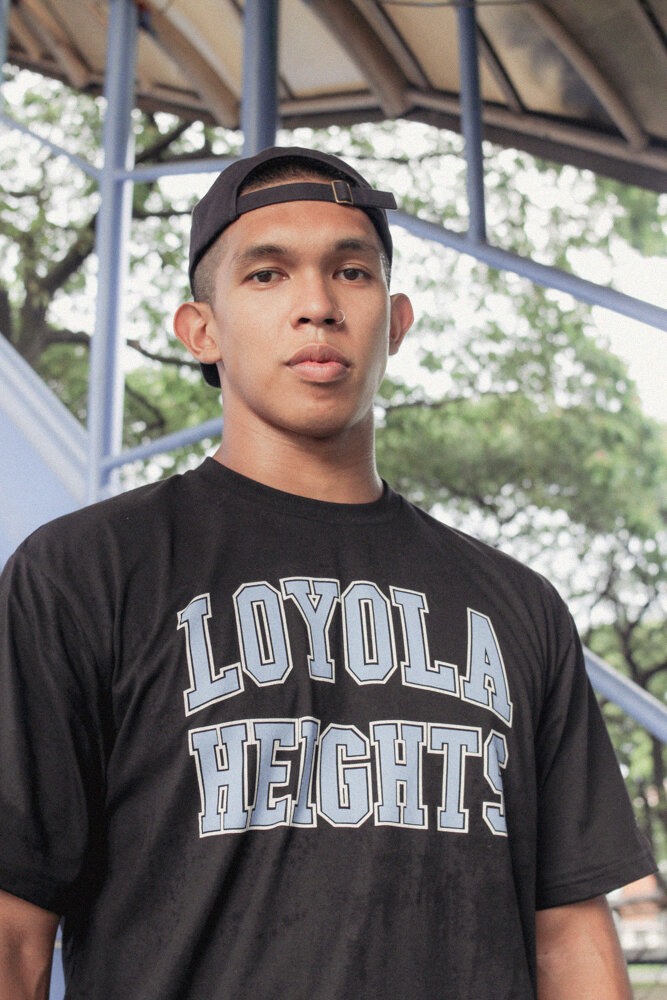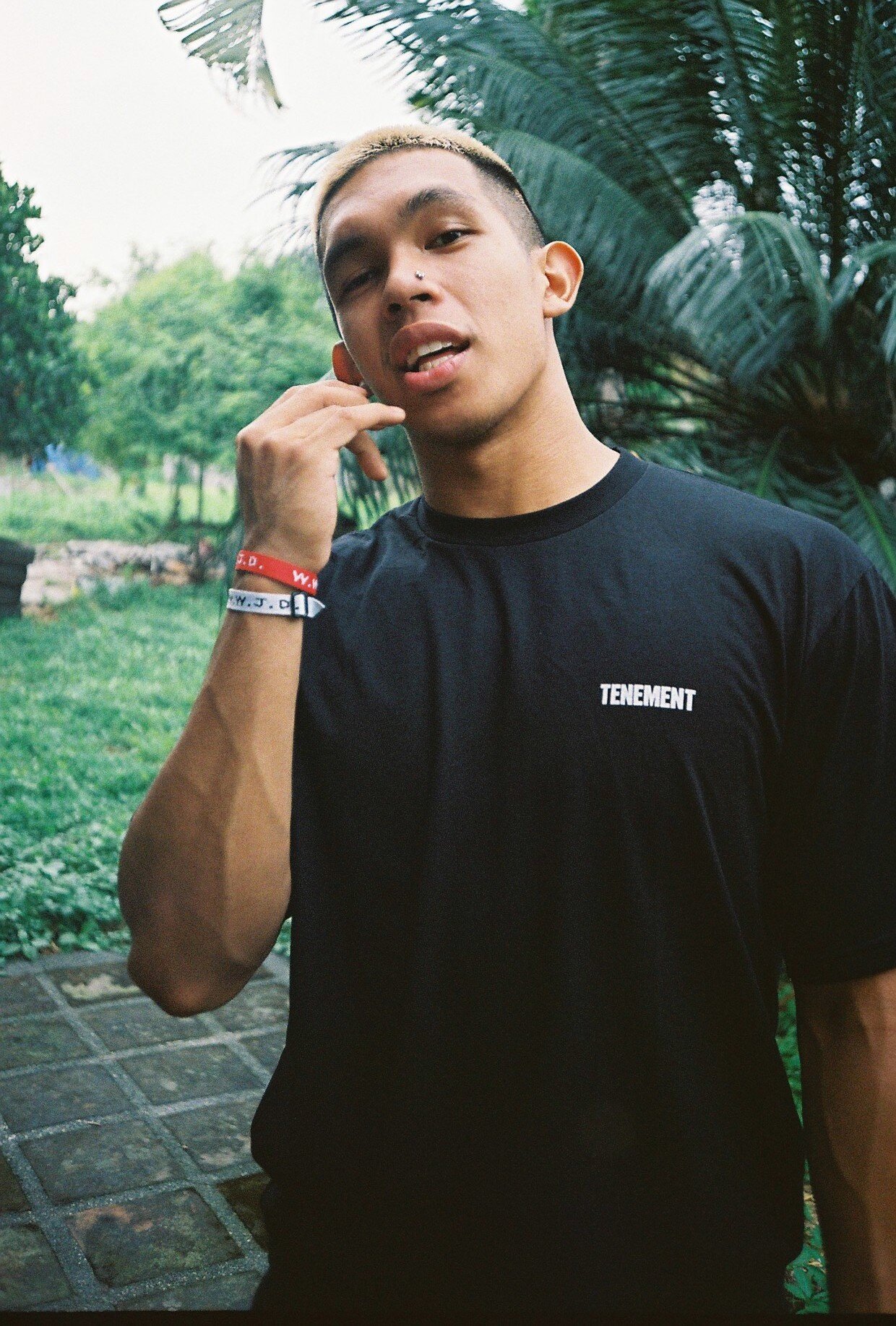Loyola Heights
Written by Colin Salao
‘LOYOLA HEIGHTS’
That’s what Thirdy Ravena’s dark blue shirt spelled out as he and a few of his friends treaded north on the Katipunan sidewalk right outside Ateneo de Manila University. The two words called out the barangay which they used to refer to as their second home.
They were there to snap some photos by their alma mater — a final bid ado to the school Thirdy had represented for half of his life. He’s set to become the first-ever Filipino to play in the Japnese B-League, which will also be his first professional league since graduating from Ateneo.
While strolling on a narrow sidewalk with a major road on one side and a fence on the other, the group was stopped multiple times by masked fans asking for socially-distanced photographs of the former Ateneo basketball star. Katipunan is significantly less inhabited nowadays, but Thirdy’s stardom — especially in Loyola Heights — was still evident.
That may not be much of a shock considering he led Ateneo to three UAAP Men’s Basketball championships. But time-traveling back to 2007 — the first time Thirdy entered Ateneo after transferring from La Salle Greenhills — would make this moment feel significantly less believable.
“I didn’t have any expectations,” Thirdy said regarding how he felt entering Ateneo back in ‘07. “I wasn’t really looking much into the future. I was just some random guy from La Salle.”
While Thirdy may have considered himself a random back in 2007, he entered Ateneo with as much buzz as any grade-schooler could have. His brother had already dominated the grade school scene, been dubbed The Phenom, and was a rare freshman addition on the Blue Eaglets. Oh, and everyone knew his dad was a former PBA star.
But it was in the 13 years that Thirdy spent in the Blue and White territory of Loyola Heights when he separated himself from his family name — growing from self-proclaimed random, to high-profile and oft-criticized, to untouchable Ateneo legend.
Back in grade school, Thirdy had a lanky frame and was raw when it came to his basketball skills. He was more of a role player on varsity teams and many were dismissing his potential to make a significant dent in the history of Ateneo basketball, let alone become a trailblazer of Philippine sports.
In high school, he grew past six-feet and capitalized on what was once untapped freak athleticism. He won the MVP in his senior year with the Blue Eaglets then entered the collegiate level as Ateneo’s blue-chip recruit.
Despite his success in the secondary level, the birds were still chirping about his dedication. They cited his lack of team success as a sign of his desire for attention over winning. Their criticisms were vindicated after Thirdy’s letdown of a rookie season and subsequent ineligibility for the succeeding season due to academics.
Thirdy returned from what he called the “worst year ever, basketball wise” with a much leaner frame, refined skill set, and most importantly, a mindset geared for success. He placed second in the MVP race and led an underdog Ateneo squad all the way to the UAAP Finals. What followed were three consecutive seasons of Ateneo championships wherein Thirdy absolutely outclassed the competition by averaging 22.4 points in seven Finals contests. He achieved a feat no one had ever done before: Three-time UAAP Finals MVP.
Whatever the critics were squawking about in the past had to be put to bed completely; Thirdy was a bonafide superstar.
And considering his masterful UAAP career, Thirdy was poised to become the number 1 pick in the PBA draft. He could follow in the footsteps of several Ateneo legends who’ve made their mark in the country’s professional league. Instead, he took the route no Filipino has ever taken, one that has him set to leave for the Land of the Rising Sun by next week.
“When it was presented to me, I realized I had an opportunity that wasn’t given to anyone,” Thirdy said about his decision to play overseas.
The beauty of Thirdy’s decision is that while no one else has been offered this opportunity but him, more people could be given it because of him. If he’s able to make a significant impact in Japan, that would only mean that more teams may be willing to bank on other Filipinos to steer their squads in future years. That would open up a whole new path for aspiring Filipino players, allowing them to dream bigger and brighter than the linear paths they’ve been raised to believe in.
Should more Filipinos be given more opportunities to play in Japan, that could also create a domino effect that could open doors in more prominent leagues like the MBL in Australia or the Euroleague. More opportunities for players also means additional competition for our country’s local leagues, which would mean they would likely look to improve themselves as well. That would be great not only for the players, but even fans and consumers of the game since the final product of the more accessible local leagues will be forced to improve in order to keep up.
It’s a chain of events that — while still a dream scenario — is made possible only because a kid who was once expected to be mediocre has the gall to lead-off that chain. If all goes well, that same kid has a shot to reshape the whole game for aspiring Filipino basketball players.




